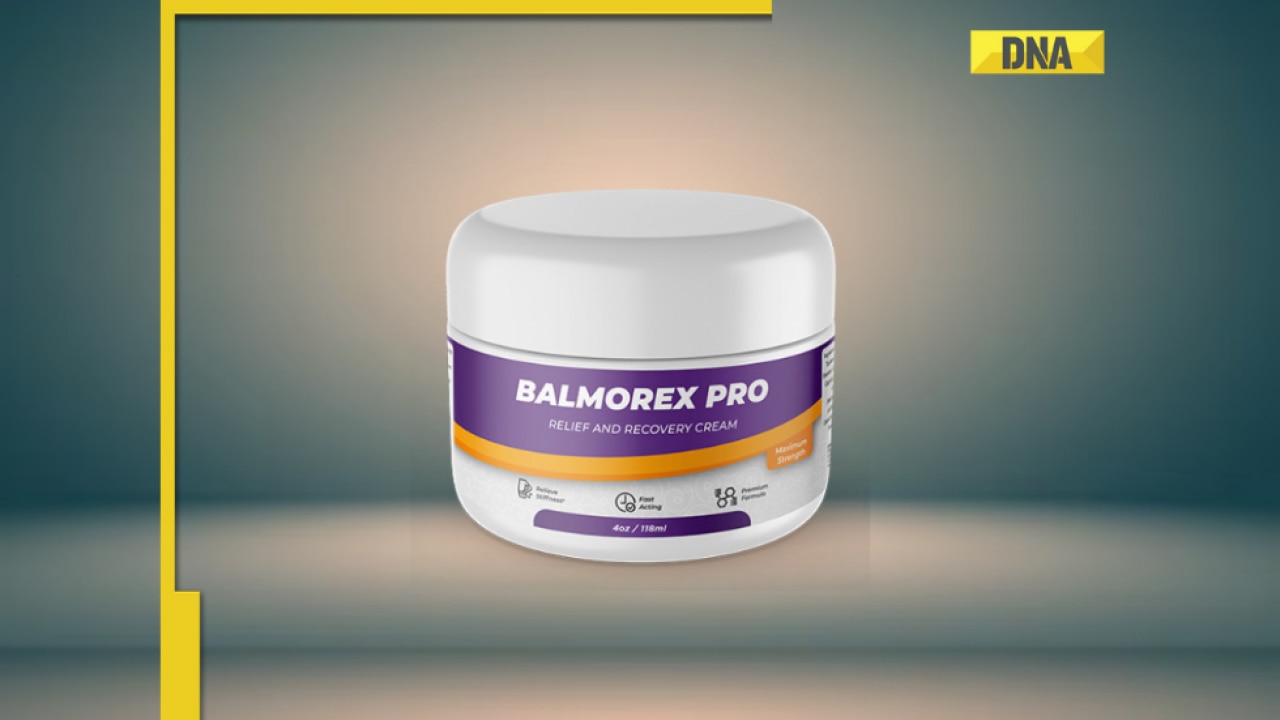The field of medical research has always been filled with continuous innovation and discovery. One such innovation that has caught the attention of researchers worldwide is peptide therapy. This blog post aims to delve into the intricacies of peptides, their therapeutic potential, and how they could revolutionize treatment for chronic and debilitating ailments.
Defining Peptides and Their Therapeutic Potential for Patients
Peptides are small chains of amino acids that are linked by peptide bonds. They are essentially smaller versions of proteins, typically containing 50 or fewer amino acids [1]. While proteins and hormones play crucial roles in our body's functioning, peptides are no less significant. They are involved in various biological functions, including hormone production, immune system activity, and cell signalling [2].
The therapeutic potential of peptides lies in their ability to mimic or inhibit the natural biological processes in our bodies. This means that they can be designed to interfere with specific cellular functions, thus offering targeted treatment options. Several studies have provided scientific evidence supporting peptide therapy's credibility as a new frontier in medical treatments [3]. For instance, peptides have shown promise in cancer treatment by specifically targeting tumour cells without affecting healthy cells [4].

Understanding Peptide Therapy - Definition and Types
Peptide therapy USA is a cutting-edge medical approach that uses specific chains of amino acids known as peptides to instruct cells on how to function. Peptides are naturally occurring biological molecules that perform crucial roles in the body. They are composed of two or more amino acids linked by peptide bonds, and they can act as neurotransmitters, hormones, or cell-communicating agents, among other functions.
There are many types of peptides, each with its specific function. For instance, Growth Hormone Releasing Hormones (GHRHs) stimulate the production of growth hormones, which can help improve muscle mass and reduce body fat. On the other hand, Immune Modulating Peptides, such as Thymosin Alpha 1, enhance immune response, making them potentially useful in treating various autoimmune and infectious diseases.
Benefits of Peptide Therapy
Peptide therapy offers a wide array of potential health benefits, many of which are backed by scientific evidence. One of the most significant advantages is its targeted approach. Since peptides are designed to bind to specific cell receptors and elicit particular responses, they allow for precise treatment, minimizing side effects.
Moreover, peptides have shown promise in anti-aging treatments. Research suggests that certain peptides can stimulate collagen production, improving skin elasticity and reducing wrinkles. Additionally, peptides like BPC-157 may promote wound healing and tissue repair, while others can enhance cognitive function, sleep quality, and sexual health.
Given these potential benefits, it's no surprise that peptide therapy is gaining traction within the medical community.
Top ten peptides used in peptide therapy:
1. BPC-157
BPC-157 is a peptide that has been researched intensely for its ability to heal tissue damage in the body. It is primarily used to treat musculoskeletal injuries, such as bone fractures, torn ligaments, and tendons. Studies have shown that BPC-157 can improve the healing of cortical bone fractures, promote tissue regeneration, and reduce inflammation [5].
2. CJC-1295 + Ipamorelin
CJC-1295 + Ipamorelin is a combination of two peptides that stimulate the production of growth hormone in the body. It is primarily used to treat growth hormone deficiencies and has been shown to increase muscle mass, bone density, and reduce body fat [6]. Studies have also shown that it can improve wound healing and improve cognitive function [7].
3. Peptide AOD 9604
Peptide AOD 9604 is a synthetic version of human growth hormone that is used to treat obesity by promoting fat loss. It works by stimulating the breakdown of fat cells and inhibiting their formation. Studies have shown that it can significantly reduce body weight and improve lipid profiles [8].
4. Selank
Selank is a peptide that has been researched for its potential to reduce anxiety by modulating neurotransmitter levels in the brain. It has been shown to reduce anxiety-like behaviours in animal studies and may have potential in treating anxiety disorders in humans. However, more research is needed to establish its efficacy and long-term safety [9].
5. Thymosin Alpha-1
Thymosin Alpha-1 is a peptide that has been studied for its ability to modulate the immune system and enhance its function. Studies have shown that it can reduce inflammation, improve immune cell function, and increase resistance to infections.
It is primarily used to treat autoimmune diseases and viral infections, particularly Hepatitis B and C, where it has shown promising results in terms of improving response to antiviral therapy [10]. Other areas of interest include cancer immunotherapy [11] and sepsis.
6. Epithalon
Epithalon is a peptide that has been researched for its potential anti-aging effects. It works by increasing the activity of telomerase, which helps protect the DNA from damage and maintain cell health. Several studies have been conducted exploring the therapeutic efficacy of Epithalon. Research has suggested its potential use in numerous medical conditions, including cardiovascular disease, neurodegenerative disorders, and cancer.
For instance, in a study on elderly patients with cardiovascular disease, treatment with Epithalon was found to normalize cholesterol levels and improve overall health status [12]. In another study involving patients with Alzheimer's disease, Epithalon treatment improved melatonin production and circadian rhythm, potentially improving sleep quality and cognitive function [13].
7. PT-141
PT-141 is a peptide that has been researched for its potential to treat sexual dysfunction in both men and women. It works by stimulating the melanocortin receptors in the brain, which can improve sexual desire, arousal, and satisfaction. Studies have shown that it can improve erectile dysfunction and sexual satisfaction in men and women [14].
8. Snap-8
Snap-8 is a peptide that has been researched for its potential anti-aging effects on the skin. It works by inhibiting the formation of wrinkles and fine lines by reducing muscle contractions under the skin [15]. Studies have shown that it can improve the appearance of fine lines and wrinkles, but its long-term effects and safety are not yet fully understood.
9. Triptorelin
Triptorelin is a peptide that has been researched for its potential to treat prostate cancer and endometriosis. It works by suppressing the production of hormones that stimulate the growth of cancer cells or endometrial tissue. Studies have shown that it can significantly reduce the size of tumours and improve symptoms in patients with prostate cancer or endometriosis [16].
10. GHRP-6
GHRP-6 is a peptide that has been researched for its ability to increase the production of growth hormone and improve lean muscle mass. It is primarily used to treat growth hormone deficiencies and has been shown to improve body composition, reduce body fat, and increase muscle mass [17].

What Conditions Could Peptide Therapy Help Treat
Peptide therapy could potentially benefit a range of conditions. For example, it has been used to treat age-related conditions such as osteoporosis and sarcopenia. Studies showed that peptides like Sermorelin can stimulate bone and muscle growth, helping to combat these conditions.
Furthermore, peptide therapy has shown potential in treating autoimmune diseases. For instance, research suggests that Thymosin Alpha 1 can modulate the immune response, making it a potential treatment for conditions like rheumatoid arthritis.
In addition, peptides have been used in cancer therapy. Certain peptides can target specific cancer cells, reducing tumour growth and potentially improving patient outcomes.
These examples illustrate the broad applicability of peptide therapy across various medical fields.
Enhancing the Quality of Life Among Those with Chronic or Debilitating Ailments Using Peptide Therapy
Peptide therapy, including peptides such as B7-33, PNC-27, and Tesamorelin, offer immense potential to improve the quality of life for patients suffering from chronic or debilitating diseases like Alzheimer's, cancer, HIV/AIDS, diabetes, and cardiovascular diseases.
In Alzheimer's disease, peptides like B7-33 have shown potential in inhibiting the formation of amyloid plaques [18], which are a characteristic feature of the disease. In cancer treatment, peptide vaccines such as PNC-27 have been developed that stimulate the immune system to attack cancer cells [19]. Moreover, peptides like Tesamorelin have shown promise in treating HIV/AIDS by inhibiting the virus's entry into cells [20].
In diabetes, peptides like GLP-1 are being researched for their potential to stimulate insulin production [21], while in cardiovascular diseases, certain peptides, including B7-33, have been found to have cardioprotective effects. References to clinical trials confirming the effectiveness of peptide therapy are abundant. For instance, a study published in the Journal of Clinical Oncology reported positive results from a phase III trial of a peptide vaccine for prostate cancer [22].
Weighing the Advantages and Disadvantages of Peptide Therapy
Like any other therapeutic approach, peptide therapy has its advantages and disadvantages. The primary advantage of peptide therapy lies in its specificity. Peptides can be designed to target specific cells or processes, thereby minimizing side effects. Moreover, as they are naturally occurring substances, they are usually well-tolerated by the body [23].
However, peptide therapy also has its challenges. One of the main drawbacks is the stability of peptides. They are easily broken down by enzymes in the body, which can limit their effectiveness. Additionally, delivering peptides to the right place in the body can be challenging due to their size and structure.
Despite these challenges, the potential benefits of peptide therapy make it a promising field of research. As we continue to deepen our understanding of peptides and their therapeutic potential, we move closer to a future where chronic and debilitating diseases can be effectively managed or even cured.
In conclusion, peptide therapy, with its unique properties and wide-ranging potential, is set to play an integral role in the future of medicine. With ongoing research and clinical trials, we can expect to see more breakthroughs in this exciting field, offering new hope for patients worldwide.
Footnotes
- National Human Genome Research Institute. (2020). What are proteins and what do they do?. Retrieved from https://www.genome.gov/genetics-glossary/Protein
- Fosgerau, K., & Hoffmann, T. (2015). Peptide therapeutics: current status and future directions. Drug discovery today, 20(1), 122-128.
- Kaspar, A. A., & Reichert, J. M. (2013). Future directions for peptide therapeutics development. Drug discovery today, 18(17-18), 807-817.
- Fosgerau, K., & Hoffmann, T. (2015). Peptide therapeutics: current status and future directions. Drug discovery today, 20(1), 122-128.
- https://pubmed.ncbi.nlm.nih.gov/21030672/
- https://pubmed.ncbi.nlm.nih.gov/16352683/
- https://pubmed.ncbi.nlm.nih.gov/10373343/
- https://pubmed.ncbi.nlm.nih.gov/11146367/
- https://www.ncbi.nlm.nih.gov/pmc/articles/PMC4757669/
- https://www.ncbi.nlm.nih.gov/pmc/articles/PMC7115394/
- https://www.frontiersin.org/journals/oncology/articles/10.3389/fonc.2019.00873/full
- https://pubmed.ncbi.nlm.nih.gov/12577695/
- https://pubmed.ncbi.nlm.nih.gov/11524632/
- https://www.ncbi.nlm.nih.gov/pmc/articles/PMC7752520/
- https://www.ncbi.nlm.nih.gov/pmc/articles/PMC5785486/
- https://pubmed.ncbi.nlm.nih.gov/31500470/
- https://academic.oup.com/endo/article/151/5/2008/2456511
- Sevigny, J., Chiao, P., Bussière, T., Weinreb, P. H., Williams, L., Maier, M., ... & Black, R. S. (2016). The antibody aducanumab reduces Aβ plaques in Alzheimer’s disease. Nature, 537(7618), 50-56.
- Rosenberg, S. A., Yang, J. C., & Restifo, N. P. (2004). Cancer immunotherapy: moving beyond current vaccines. Nature medicine, 10(9), 909-915.
- Eckert, D. M., & Kim, P. S. (2001). Mechanisms of viral membrane fusion and its inhibition. Annual review of biochemistry, 70(1), 777-810.
- Drucker, D. J. (2003). Enhancing incretin action for the treatment of type 2 diabetes. Diabetes care, 26(10), 2929-2940.
- Kantoff, P. W., Schuetz, T. J., Blumenstein, B. A., Glode, L. M., Bilhartz, D. L., Wyand, M., ... & Small, E. J. (2010). Overall survival analysis of a phase II randomized controlled trial of a Poxviral-based PSA-targeted immunotherapy in metastatic castration-resistant prostate cancer. Journal of Clinical Oncology, 28(7), 1099.
Craik, D. J., Fairlie, D. P., Liras, S., & Price, D. (2013). The future of peptide-based drugs. Chemical biology & drug design, 81(1), 136-147.
(Above mentioned article is consumer connect initiative. This article is a paid publication and does not have journalistic/editorial involvement of DMCL, and DMCL claims no responsibility whatsoever)
![submenu-img]() Balancing Risk and Reward: Tips and Tricks for Good Mobile Trading
Balancing Risk and Reward: Tips and Tricks for Good Mobile Trading![submenu-img]() Balmorex Pro [Is It Safe?] Real Customers Expose Hidden Dangers
Balmorex Pro [Is It Safe?] Real Customers Expose Hidden Dangers![submenu-img]() Sight Care Reviews (Real User EXPERIENCE) Ingredients, Benefits, And Side Effects Of Vision Support Formula Revealed!
Sight Care Reviews (Real User EXPERIENCE) Ingredients, Benefits, And Side Effects Of Vision Support Formula Revealed!![submenu-img]() Java Burn Reviews (Weight Loss Supplement) Real Ingredients, Benefits, Risks, And Honest Customer Reviews
Java Burn Reviews (Weight Loss Supplement) Real Ingredients, Benefits, Risks, And Honest Customer Reviews![submenu-img]() Gurucharan Singh is still unreachable after returning home, says Taarak Mehta producer Asit Modi: 'I have been trying..'
Gurucharan Singh is still unreachable after returning home, says Taarak Mehta producer Asit Modi: 'I have been trying..'![submenu-img]() RBSE 12th Result 2024 Live Updates: Rajasthan Board Class 12 results DECLARED, get direct link here
RBSE 12th Result 2024 Live Updates: Rajasthan Board Class 12 results DECLARED, get direct link here![submenu-img]() IIT graduate Indian genius ‘solved’ 161-year old maths mystery, left teaching to become CEO of…
IIT graduate Indian genius ‘solved’ 161-year old maths mystery, left teaching to become CEO of…![submenu-img]() RBSE 12th Result 2024 Live Updates: Rajasthan Board Class 12 results to be announced soon, get direct link here
RBSE 12th Result 2024 Live Updates: Rajasthan Board Class 12 results to be announced soon, get direct link here![submenu-img]() Meet doctor who cracked UPSC exam to become IAS officer but resigned after few years due to...
Meet doctor who cracked UPSC exam to become IAS officer but resigned after few years due to...![submenu-img]() IIT graduate gets job with Rs 45 crore salary package, fired after few years, buys Narayana Murthy’s…
IIT graduate gets job with Rs 45 crore salary package, fired after few years, buys Narayana Murthy’s…![submenu-img]() DNA Verified: Is CAA an anti-Muslim law? Centre terms news report as 'misleading'
DNA Verified: Is CAA an anti-Muslim law? Centre terms news report as 'misleading'![submenu-img]() DNA Verified: Lok Sabha Elections 2024 to be held on April 19? Know truth behind viral message
DNA Verified: Lok Sabha Elections 2024 to be held on April 19? Know truth behind viral message![submenu-img]() DNA Verified: Modi govt giving students free laptops under 'One Student One Laptop' scheme? Know truth here
DNA Verified: Modi govt giving students free laptops under 'One Student One Laptop' scheme? Know truth here![submenu-img]() DNA Verified: Shah Rukh Khan denies reports of his role in release of India's naval officers from Qatar
DNA Verified: Shah Rukh Khan denies reports of his role in release of India's naval officers from Qatar![submenu-img]() DNA Verified: Is govt providing Rs 1.6 lakh benefit to girls under PM Ladli Laxmi Yojana? Know truth
DNA Verified: Is govt providing Rs 1.6 lakh benefit to girls under PM Ladli Laxmi Yojana? Know truth![submenu-img]() Urvashi Rautela mesmerises in blue celestial gown, her dancing fish necklace steals the limelight at Cannes 2024
Urvashi Rautela mesmerises in blue celestial gown, her dancing fish necklace steals the limelight at Cannes 2024![submenu-img]() Kiara Advani attends Women In Cinema Gala in dramatic ensemble, netizens say 'who designs these hideous dresses'
Kiara Advani attends Women In Cinema Gala in dramatic ensemble, netizens say 'who designs these hideous dresses'![submenu-img]() Influencer Diipa Büller-Khosla looks 'drop dead gorgeous' in metallic structured dress at Cannes 2024
Influencer Diipa Büller-Khosla looks 'drop dead gorgeous' in metallic structured dress at Cannes 2024![submenu-img]() Kiara Advani stuns in Prabal Gurung thigh-high slit gown for her Cannes debut, poses by the French Riviera
Kiara Advani stuns in Prabal Gurung thigh-high slit gown for her Cannes debut, poses by the French Riviera![submenu-img]() Heeramandi star Taha Shah Badussha makes dashing debut at Cannes Film Festival, fans call him ‘international crush’
Heeramandi star Taha Shah Badussha makes dashing debut at Cannes Film Festival, fans call him ‘international crush’![submenu-img]() Haryana Political Crisis: Will 3 independent MLAs support withdrawal impact the present Nayab Saini led-BJP government?
Haryana Political Crisis: Will 3 independent MLAs support withdrawal impact the present Nayab Saini led-BJP government?![submenu-img]() DNA Explainer: Why Harvey Weinstein's rape conviction was overturned, will beleaguered Hollywood mogul get out of jail?
DNA Explainer: Why Harvey Weinstein's rape conviction was overturned, will beleaguered Hollywood mogul get out of jail?![submenu-img]() What is inheritance tax?
What is inheritance tax?![submenu-img]() DNA Explainer: What is cloud seeding which is blamed for wreaking havoc in Dubai?
DNA Explainer: What is cloud seeding which is blamed for wreaking havoc in Dubai?![submenu-img]() DNA Explainer: What is Israel's Arrow-3 defence system used to intercept Iran's missile attack?
DNA Explainer: What is Israel's Arrow-3 defence system used to intercept Iran's missile attack?![submenu-img]() Gurucharan Singh is still unreachable after returning home, says Taarak Mehta producer Asit Modi: 'I have been trying..'
Gurucharan Singh is still unreachable after returning home, says Taarak Mehta producer Asit Modi: 'I have been trying..'![submenu-img]() ‘Jo mujhse bulwana chahte ho…’: Angry Dharmendra lashes out after casting his vote in Lok Sabha Elections 2024
‘Jo mujhse bulwana chahte ho…’: Angry Dharmendra lashes out after casting his vote in Lok Sabha Elections 2024![submenu-img]() Deepika Padukone spotted with her baby bump as she steps out with Ranveer Singh to cast her vote in Lok Sabha elections
Deepika Padukone spotted with her baby bump as she steps out with Ranveer Singh to cast her vote in Lok Sabha elections![submenu-img]() Jr NTR surprises fans on birthday, announces NTR 31 with Prashanth Neel, shares details
Jr NTR surprises fans on birthday, announces NTR 31 with Prashanth Neel, shares details ![submenu-img]() 86-year-old Shubha Khote wins hearts by coming out to cast her vote in Lok Sabha elections, says meant to inspire voters
86-year-old Shubha Khote wins hearts by coming out to cast her vote in Lok Sabha elections, says meant to inspire voters![submenu-img]() Watch viral video: Man gets attacked after trying to touch ‘pet’ cheetah; netizens react
Watch viral video: Man gets attacked after trying to touch ‘pet’ cheetah; netizens react![submenu-img]() Real story of Lahore's Heermandi that inspired Netflix series
Real story of Lahore's Heermandi that inspired Netflix series![submenu-img]() 12-year-old Bengaluru girl undergoes surgery after eating 'smoky paan', details inside
12-year-old Bengaluru girl undergoes surgery after eating 'smoky paan', details inside![submenu-img]() Viral video: Pakistani man tries to get close with tiger and this happens next
Viral video: Pakistani man tries to get close with tiger and this happens next![submenu-img]() Owl swallows snake in one go, viral video shocks internet
Owl swallows snake in one go, viral video shocks internet








































)













)
)




)
)
)
)
)
)